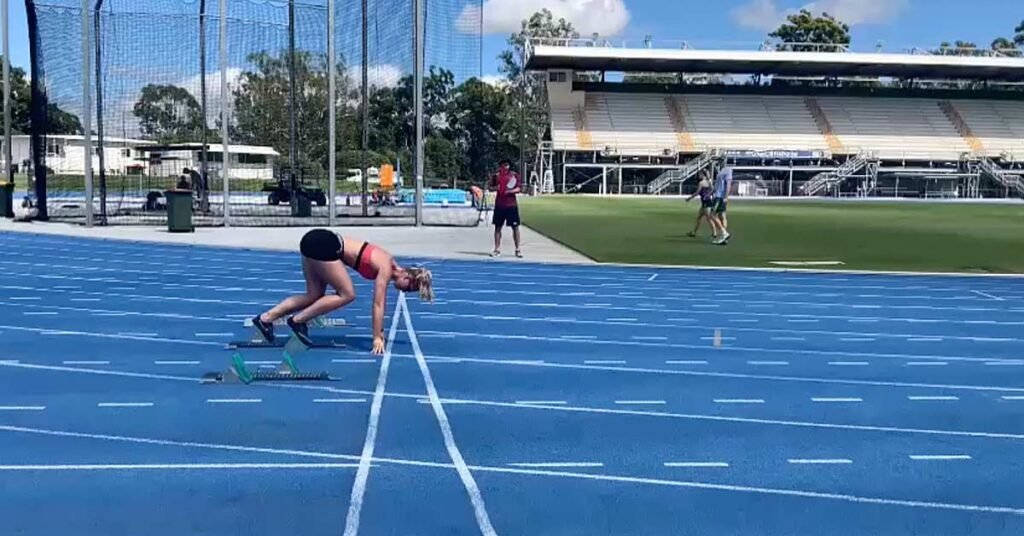Coach Education Resources

Should You Plan Aerobic Training Before or After Strength Training?
A long-standing gym debate finally gets clarity. New research reveals that lifting weights before cardio significantly boosts fat loss and muscle performance. Whether your goal is body composition, strength, or aerobic capacity, understanding the science behind exercise sequencing can help unlock better results.

The Key Principles You Must Understand About Planning for Youth Athletes
Whether you're coaching rising sprinters or first-time throwers, effective season planning for junior athletes is more than just filling a calendar.
In this post, we break down the essential principles every coach should understand—covering periodisation, youth development, and how to monitor and manage training load without frying your athletes. If you've ever wondered whether you're doing it right (or just hoping for the best), this guide will help you identify where your knowledge gaps are.

Energy System Chart - How to Train Maximum Speed, Speed Endurance, and Tempo
This chart provides a general overview of the optimal distances, intensity, rest, progression, and daily training loads for developing the different components of speed, speed endurance, special endurance and tempo running.

Moving Beyond Distance Alone - A More Nuanced Approach to Training Load in Runners
This commentary from the Journal of Orthopaedic & Sports Physical Therapy argues that runners and coaches should move beyond solely focusing on weekly distance when quantifying and monitoring training load. The authors explain that running distance is only one aspect of training stress and fails to capture the full picture of the mechanical, physiological, and psychological demands of running.

Considerations of Training Load
Athletes need to plan and periodise their training load to enhance performance and prevent injury. This involves balancing periods of intense training (loading) with strategic reductions in training volume (unloading), such as planned breaks or rest periods. The time it takes to return to full training load after unloading is proportional to the length of the reduced workload.
Read the full article to learn the main considerations of manipulating training load for optimal athlete adaptation and performance.

The Whole Athlete and Training Program
This High Performance Town Hall explores the importance of a comprehensive training program for athletes, focusing on the “whole athlete” and the role of communication, and planning.
Master Coach, Susan Hobson, and AA Dietitian Lead, Bryce Anderson, highlight the crucial elements beyond just physical training, including nutrition, sleep, recovery, and mental health, and how these should be integrated into the program.

Recommended Training Loads for Teenage Athletes: A Guide to Optimal Development
Training young athletes is a delicate balance of enhancing performance while ensuring safety, longevity, and enjoyment in sports. Overtraining can lead to burnout or injury, while undertraining may limit athletic potential. For junior athletes, particularly those aged 12-18 in track and field, the correct training loads are crucial to optimizing their development while preventing injury.
This article discusses the recommended training loads for young athletes, focusing on the balance between technique, strength training, and recovery. We’ll explore research-backed guidelines and provide insights into how to tailor programs for individual athletes’ needs.

Developing an Integrated Approach to Periodization
Track and field coaches must recognize that periodization is not just about varying training loads and intensities but encompasses a multifaceted approach. A well-designed periodization plan should integrate recovery, nutrition, psychological preparation, and skill acquisition to optimize athlete performance. Coaches should focus on structuring training cycles that include strategic recovery phases, tapering before competitions, and managing the cognitive load of skill-based training. The key is balancing hard training with adequate rest and recovery, ensuring athletes peak at the right moments without risking overtraining.

Does U18 and U20 Success Correlate with Success at Senior Level?
Both male and female athletes who are more successful in young age categories (U18 and U20) were more likely to achieve success as a senior than less successful young athletes. Female athletes who were successful when young were more likely to maintain athletic success as a senior when compared to young males. A significant proportion of senior athletes (both male and female) were not successful in any of the young age categories.

How Many Times a Week Should a Muscle be Trained to Maximise Muscle Hypertrophy?
Training frequency is considered an important variable in the hypertrophic response to regimented resistance exercise. The purpose of this paper was to conduct a systematic review and meta-analysis of experimental studies designed to investigate the effects of weekly training frequency on hypertrophic adaptations.

Strategies for Overcoming CNS Fatigue
explore evidence-based strategies for coaches to effectively reduce central nervous system (CNS) fatigue in athletes. Emphasis will be placed on understanding the mechanisms of CNS fatigue and implementing tailored training, recovery, and mental conditioning techniques.

Preparation for the Olympics and Paralympics
Learn from three of Australia’s leading High Performance coaches as they describe their preparation for the upcoming 2024 Olympics and Paralympics. Hear from Sprints Coach Andrew Murphy, Jumps lead Alex Stewart, and Distance guru Philo Saunders as they explain how elilte athletes will optimise their condition prior to a major championships.

Monitoring Training Load for Track and Field Athletes
The article will introduce the principles of internal and external training load and encourage you to monitor both internal and external load measurements of your athletes.

Maintaining Clarity and Consistency in a Training Program with Paul Pearce
Australian Level 4 High Performance sprints coach, Paul Pearce, explains his approach to training and weekly training structure for his sprinting group.

